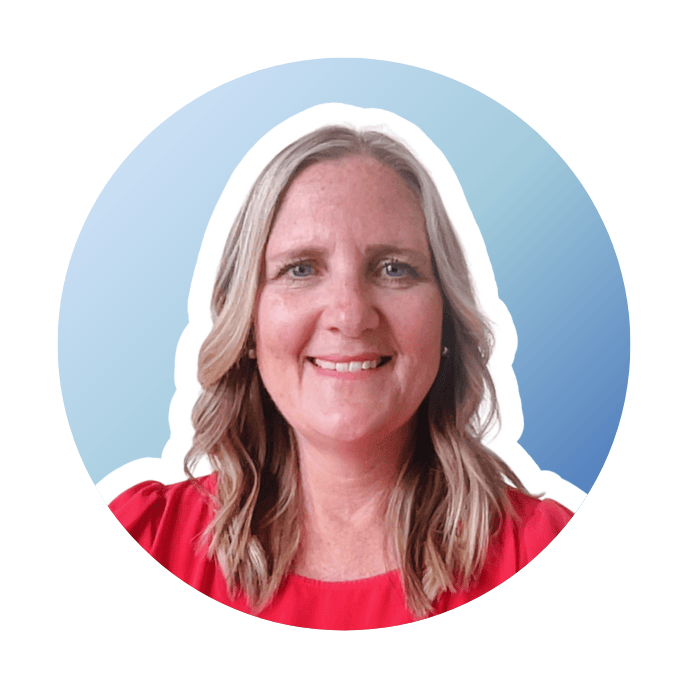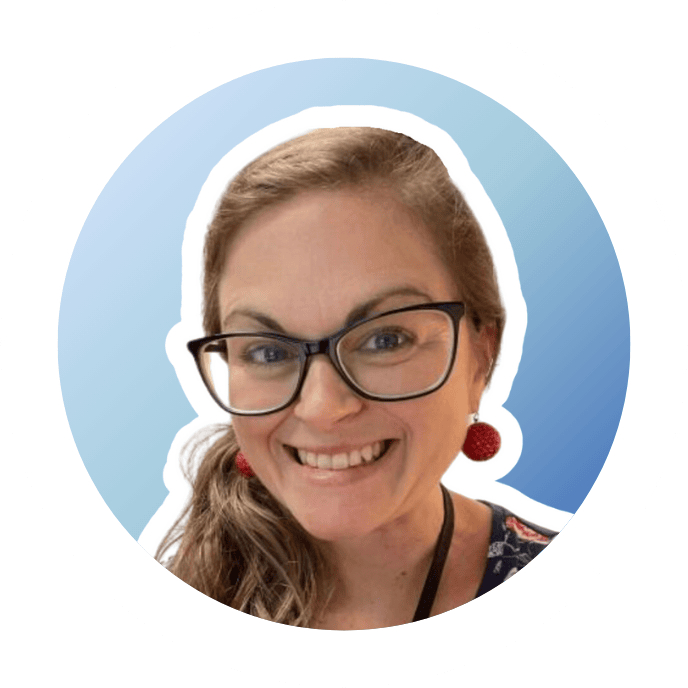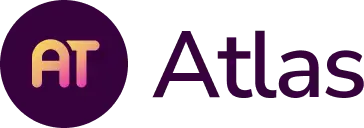Curriculum Mapping: Common Questions & Answers
Getting teacher buy-in is one of the most common—and critical—challenges schools face when launching a curriculum mapping initiative. Whether you're introducing Atlas for the first time or deepening its use across your school or district, it’s important to understand what teachers need to feel supported, heard, and equipped to engage in unit planning.
In this article, our team of experienced curriculum advisors shares real-world responses to the most frequent questions and hesitations teachers express during implementation. Use these insights to:
- Prepare for launch conversations with teaching teams
- Anticipate and address common objections
- Equip curriculum leads with language that builds trust and ownership
- Support a smoother, more collaborative rollout of unit planning in Atlas
Meet the experts
 |  |  |
| Angie Parker Implementation Specialist Before joining the Faria team, Angie was the technology teacher and school staff trainer at her school for 20+ years. She now guides schools through their initial launch of their mapping projects in Atlas. | Michael Arnold Senior Solutions Consultant Michael has 20 years experience in faith-based education as a teacher, curriculum director, and Education Technology. Michael’s mission is to connect schools to the right tools and practices to enhance its school’s mission. | Kindall Dobson, School Experience Manager Prior to joining Faria, Kindall served as a curriculum coordinator, assistant to the head of school, and then an elementary principal, Kindall now offers her experience and support for other faith-based schools regardless of where they are on their curriculum journey. |
Textbooks: Why should I map my curriculum if I’m mostly following my textbook?
Textbooks provide a solid foundation, but they are designed for a broad audience and may not fully address the unique needs of your students or your school’s commitment to faith formation. Even when written and published from within your own faith-based context, knowledgeable educators still need to direct their use to best fit their specific context. Curriculum mapping ensures your teaching reflects both academic excellence and the spiritual truths of your faith tradition.
Angie: Curriculum mapping should align with standards and outcomes, but it should also reflect a student-centered approach. Each year, God entrusts you with students who have distinct gifts, challenges, and spiritual journeys. Mapping allows you to adapt our teaching to their needs. By aligning your curriculum with standards and your students’ unique callings, you create a learning environment that fosters both intellectual and spiritual formation.
Kindall: Absolutely! Textbooks target a general audience, but your students are unique. Mapping helps you adapt to them. Also, many teachers start at the beginning of a textbook and just go as far as they can, but what happens if you run out of time? Pacing matters—without planning, you might miss critical concepts students need later.
Michael: In my view, the best learning often transcends the confines of a textbook. Textbooks serve as a valuable foundation, but they should not be seen as the ultimate or minimum resource for education. When educators shift their focus to defining and ensuring "guaranteed minimums"—the essential concepts and skills students must master—they are freed from the pressure of simply "covering content." This approach opens up numerous opportunities to ignite creativity in their teaching and to forge deeper connections between the curriculum and students' inherent curiosity. Ideally, you will find your textbook to be an abundant resource from which you can support a majority of your instruction. But it is important to have a clear process that clearly evaluates and documents where the textbook works well and where the students need something outside of the textbook. Ideally, your textbook will be a rich, even abundant, resource that supports most of your instruction. However, it's crucial to have a clear process for evaluating and documenting where the textbook is effective and where supplementary materials are needed for students.
Atlas Advantage: Atlas helps define and make visible the guaranteed minimums from adopted texts. It also supports teachers in highlighting textbook and supplemental resources, building viability and efficiency into instructional plans. A curriculum map in Atlas ensures you’re teaching what must be taught—not just covering content.
Related Resources:
- The Benefits of a Documented Curriculum
- The Latest Additions to the Published Curriculum Library
- Where to Start: Mapping Elementary ELA with Standards and a Textbook
- Beyond the Textbook - Instructional Material for History Curriculum
Templates: Why am I locked into a common template?
A common template fosters unity and collaboration, ensuring all teachers work toward a shared purpose while allowing flexibility to reflect your tradition’s distinctives.A shared template encourages unity and collaboration among teachers, ensuring they all work towards a common goal. This approach also provides the flexibility to incorporate the unique aspects of your tradition.
Kindall: It helps everyone work toward a common mission. Using the same template ensures we’re all tracking comparable content, no matter the grade or class.
Michael: A common template promotes collaboration. It helps us all think about the same big ideas, and rather than being restrictive, it harnesses shared energy because we are all thinking about and documenting some of the same main components of our instruction. A common template increases efficiency in our collaborative efforts because we do not need to spend as much time “decoding” the notes, planning practices, or processes of the educators we are relying on to share their best ideas. We can review each other’s work in a framework that immediately makes sense, and begin adapting to our own context or connecting dots. This is good for the teacher and the student alike!
Angie: Your work is about building a community where teachers, students, and families grow together. A common curriculum mapping template fosters this by creating transparency and alignment and ensures you all are working toward the same goal
Atlas Advantage: Atlas facilitates the use of a consistent template for essential instructional planning and decision-making. This approach fosters valuable opportunities for analysis and collaboration, strengthening a sense of community around instructional practices. Additionally, Atlas accommodates departmental or subject-specific variations as necessary to align with key initiatives.
Related Resources:
- How Schools Design Their Unit Template for Mission-Driven Curriculum
- Curriculum Templates Adjust with Time - Before and After
Improvement: My students seem to be doing fine—why reflect or update my curriculum?
An up-to-date and stimulating curriculum is vital for effective teaching. It requires continuous evaluation and adaptation to remain relevant and engaging. A current curriculum incorporates new research, preparing students for future challenges, while an engaging one fosters a love of learning through diverse strategies. Ultimately, a current and engaging curriculum is fundamental to responsible teaching, empowering educators to provide a high-quality learning experience.
Angie: Society, technology, and education evolve, shaping the future your students will inherit. Reflecting on and updating your curriculum ensures your teaching equips students with the skills, knowledge, and spiritual foundation to navigate God’s world with confidence. Reflection is also a discipline, allowing you to grow as an educator. By updating your curriculum, you model humility and lifelong learning.
Kindall: Agreed! Curriculum is a living, breathing thing. It should evolve as we reflect on what’s best for each year’s students.
Michael: As the saying goes, “A rut is just a grave with the ends knocked out.” Without reflection and refinement, our instructional efforts can become lifeless! A dynamic curriculum, invigorated by continuous reflection and updates, prevents stagnation and keeps the spark of learning alive. This ongoing process ensures instruction remains fresh and inspiring, captivating students' imaginations. Furthermore, it exemplifies a teacher's commitment to lifelong learning in the pursuit of truth and excellence.
Atlas Advantage: Atlas helps track curriculum updates over time, see recent changes, and maintain older plans. This promotes living, breathing curriculum design and supports accountability and growth.
Related Resources:
- 15 Approaches to Student-Centered Learning
- Using the Multiple Intelligences Theory in a Classroom
- Connecting the Dots: Using Data to Drive Meaningful Improvement in Math Education
- Atlas Integrates with AssessPrep for Data-Driven Curriculum Management
Planning Practices: I already do lesson planning—why do unit plans too?
Unit planning offers a comprehensive perspective on teaching, aligning instructional methods and curriculum with your school’s ultimate desired outcomes. This strategic approach develops cohesive lessons, fostering deeper understanding and retention. It integrates essential skills and themes across subjects, creating a holistic learning experience. Unit planning also incorporates the school's values and theological underpinnings, ensuring the curriculum nurtures spiritual growth alongside academic content.
Michael: While daily lesson planning helps maintain focus and increase instructional efficiency on a day-to-day basis, unit planning provides a broader perspective, clarifying your ultimate goals and guaranteed outcomes. It is common for lessons created outside of the context of a course map (with a unit focus) to veer off course. I like to see unit plans as the aerial view of the landscape while lesson plans might be seen as the field guide on your year-long hike.
Angie: Unit planning helps pace your year realistically, showing what’s essential and what’s optional—reducing pressure. Lesson planning keeps daily teaching on track, but unit planning helps you pace your year realistically. By outlining essential concepts, skills, and principles, you distinguish between non-negotiables and optional activities. This clarity lets you teach confidently, knowing you’re covering what matters without feeling rushed.
Kindall: Non-negotiable units keep perspective. Lessons show what you’re teaching; units show what you should be teaching.
Atlas Advantage: Atlas unifies unit and lesson plans, allowing educators to easily update and reuse content for efficiency and consistency. It presents lessons within their unit context, helping teachers understand how each contributes to learning objectives. This fosters collaboration and ensures a seamless learning experience for students.
Related Resources:
- The Benefits of Unit Planning
- 5 Tips to Support English Learners Through Intentional Unit Planning
- 3 Ways to Integrate 21st Century Skills in Curriculum Planning
- The Benefits of Sharing Unit Plans with Students
Documentation: I already store things in Google Drive—why move them?
A dedicated platform like Atlas enhances the usability, organization, and transparency of your curriculum, ensuring it serves your students and school’s mission.
Kindall: Data is only valuable if you can use it. Google Docs don’t easily support reporting, and it’s hard to track the original version.
Michael: It all comes down to intended purposes. While web-based platforms, such as Google Suite, excel at content creation, expansion, and dissemination - useful in some aspects, the individualized, easy to copy, expand, and adjust features also makes clarity, analysis, and collaboration difficult. Atlas provides a comprehensive and integrated platform for documentation, organization, and analysis. This holistic perspective ensures that educators clearly understand how individual curriculum pieces fit together to create a cohesive and effective learning experience for students. This unified view fosters improved collaboration among teachers, as they can collectively visualize the entire curriculum, pinpoint areas for enhancement, and ensure consistency across grade levels and subjects.
Angie: Google Drive can feel clunky, and it lacks transparency. If a teacher leaves, their resources in Google Drive may become inaccessible, disrupting continuity. Atlas keeps your curriculum organized and accessible, preserving units and lessons.
Atlas Advnatage: Atlas simplifies instructional planning and reporting. Its centralized system tracks all updates, eliminating lost files and outdated materials, ensuring educators always have current curriculum documents.
Related Resources:
Standards: Why reference state standards at a private school?
Referencing state standards ensures students are prepared for academic success while upholding your school’s Christian mission,
Angie: Students engage with the broader world through standardized tests for college admissions. Referencing state standards ensures your curriculum prepares students academically.
Kindall: Standards shouldn’t feel restrictive—they balance teacher freedom with accountability, so students are better prepared.
Michael: Standards are vital in education, providing a framework for responsible learning, smooth student transitions, and clear parent communication. They establish common learning goals, fostering accountability, equity, and improved student outcomes. Standards guide curriculum, instruction, and assessment, creating a coherent educational system benefiting all. I like to refer to standards as a framework for stewardship supporting students on their learning journey, regardless of when they may transfer into (or out of) our school.
Atlas Advantage: Atlas offers powerful tools like the Standards Overview and Standards Analysis reports to track alignment and find gaps or strengths.
Related Resources:
- Prioritizing and Flagging Standards in Curriculum with Atlas
- Prioritizing Standards: An Opportunity for Collaboration
Collaboration: I’m the only teacher at my grade/subject—why bother?
Collaboration, even as a solo teacher, strengthens your teaching and aligns it with your school’s unified mission.
Kindall: You’re part of a bigger academic and faith-based mission. Knowing what’s taught in other grades shapes what you prioritize.
Michael: Even solitary teachers operate within a larger educational ecosystem. Collaborating with co-curricular educators (librarians, art, music, PE, special ed) and curriculum committees (administrators, department heads, experienced teachers) is vital for comprehensive, cohesive student learning, as their decisions directly impact curriculum and pedagogy. In many cases, collaborating with teachers above/below your grade level around strategies and resources can bring more coherence to the overall student journey.
Angie: Curriculum mapping fosters community, as a solo teacher, your mapped curriculum ensures continuity if you leave. Curriculum mapping also allows for greater collaboration opportunities with teachers of other subject areas.
Atlas Advantage: Features like the “All Curriculum” menu and specific reports like the Comparative Unit Calendars report reveal what’s being taught around you and highlight collaboration opportunities. Additional opportunities for analysis around strategies and assessments can lead to even more collaborative efforts vertically and horizontally.
Related Resources:
- Curriculum Review with PLC Framework
- Assessment Task Improvements: Supporting Differentiation, Collaboration and Usability
- The Hidden Curriculum Gaps That Can Jeopardize Your High Reliability School (HRS) Certification
Time: Where do I find time to map on top of everything else?
Curriculum mapping is a long-term process that can increase efficiency around intended curricular outcomes and research-based instructional practices. Initial documentation can be time-consuming, but it can lead to professional growth and yield greater efficiency later on.
Angie: It’s a multi-year process. Schools often dedicate professional development time for mapping, allowing for continued collaboration. Once maps are created, they simplify planning,
Kindall: It’s a marathon, not a sprint. Admin teams can help by carving out time during in-service days or staff meetings.
Michael: It is helpful to see mapping as an investment into long-range efficiency and success. Every single instructional decision cannot be detailed and evaluated at once. So, it is best to start with clear goals based on obvious areas of growth and build intentionally. Capturing what already exists and moving toward improved outcomes in a collective way (by department or grade) can make the initial investment more manageable while yielding more immediate success.
Atlas Advantage: Atlas stores and updates your curriculum over time, with annual archives to track changes and support reflection.
Related Resources:
- Manage Curriculum Change with a Shared Leadership Approach
- Two Strategies for Mapping Elementary English in Atlas
- Annual Curriculum Updates: Preparing for the New Academic Year
Professional Growth: What’s in it for me?
Mapping fosters your growth as a Christian educator, enhancing your ability to teach with faith and intentionality.
Michael: Faith-based educators operate within a distinct environment that demands a tailored approach to applying instructional goals to their specific context. Generic instructional methods rarely align with the unique cultural realities of individual schools. This requires thoughtful reflection, drawing upon a diverse range of resources. Curriculum mapping serves as a valuable process for capturing feedback, reflecting on those decisions and plans, engaging in continuous improvement year after year as educators strive to fulfill their specific mission, integrating their personal teaching style and inherent strengths.
Angie: Mapping keeps teaching fresh, helps prioritize time, and pushes continuous growth.
Kindall: Reports in Atlas offer tangible feedback and insights for professional reflection.
Atlas Advantage: Atlas tracks instructional plans, professional growth, and institutional knowledge, supporting both school and teacher development.
Related Resources:
- Play the Long Game: 6 Tips for Planning Professional Learning
- Facilitating Professional Learning through Model Instruction Practices
Student Focus: What do my students gain?
Mapping ensures students receive a tailored, faith-infused education that meets clear academic and spiritual-formational needs.
Kindall: Mapping keeps the focus on student needs: mastery of standards, skills, deeper concepts, and real-world connections.
Michael: Curriculum mapping maximizes the dynamic teacher-student relationship, which fosters personalized, transformative learning. Human interaction provides nuanced insights and individualized guidance that textbooks and AI cannot replicate. Technology lacks genuine human connection, emotional understanding, and real-time adaptability. This unique bond is essential for understanding learning styles, addressing challenges, and nurturing curiosity, making it central to the art and science of curriculum design.
Angie: Mapping frees up time to design meaningful, cross-curricular projects tailored to each year’s class.
Atlas Advantage: Atlas supports flexibility and transparency, helping teachers pivot thoughtfully while staying aligned with course goals.
Related Resources:

